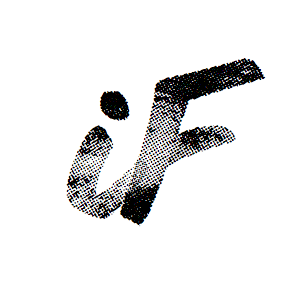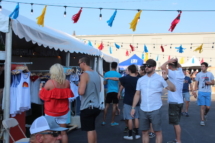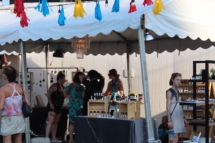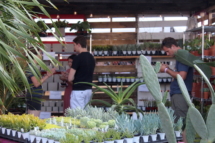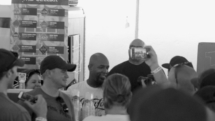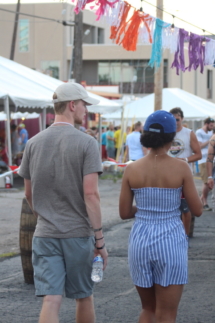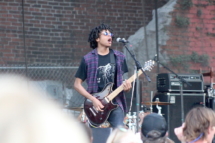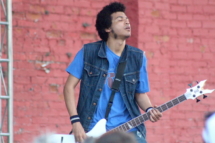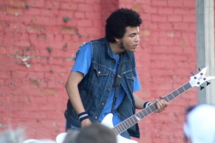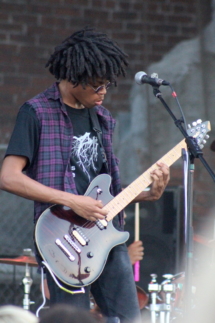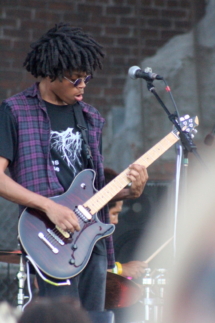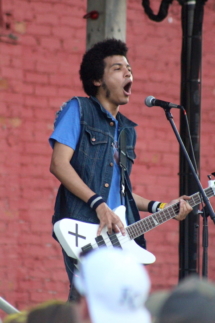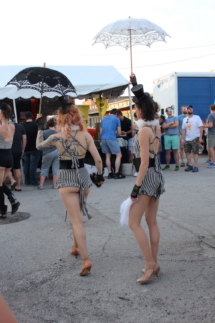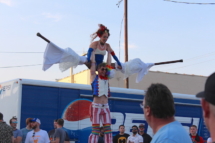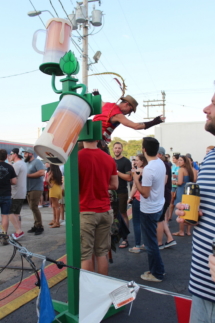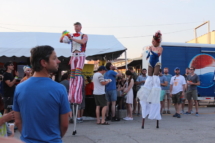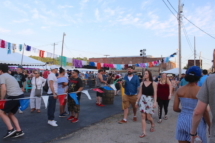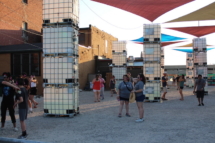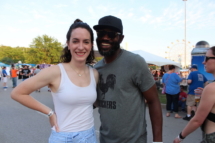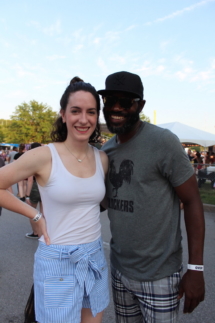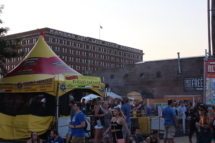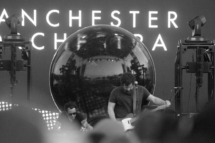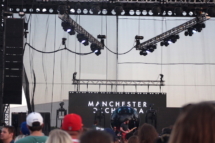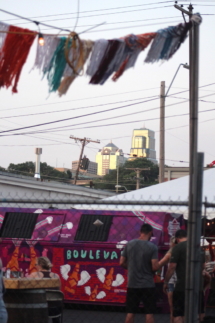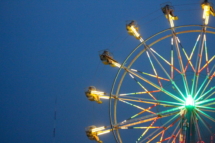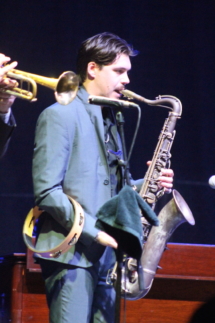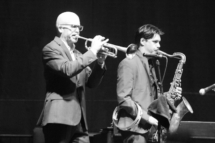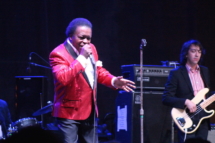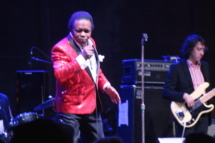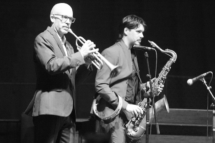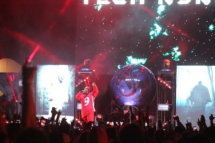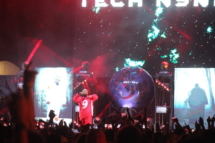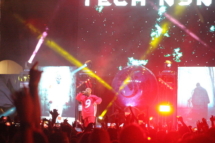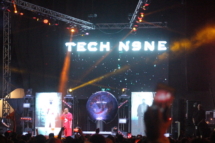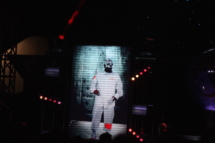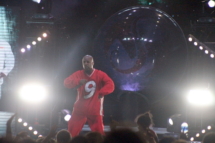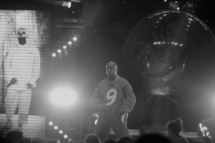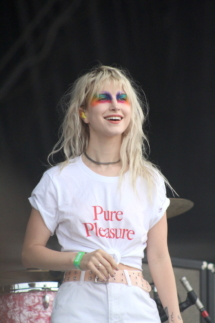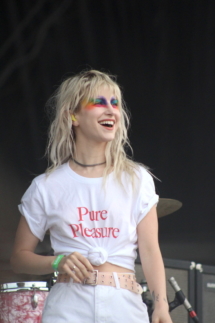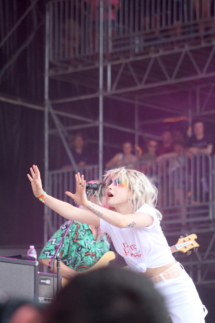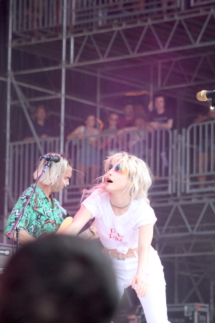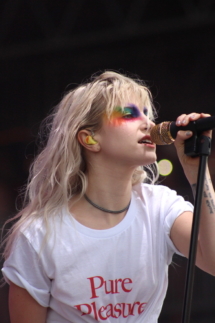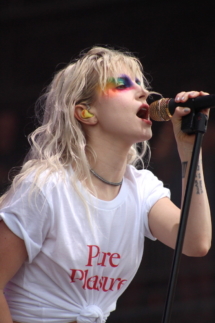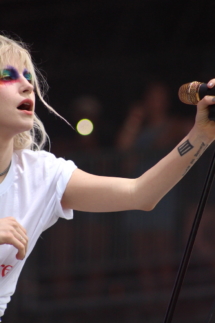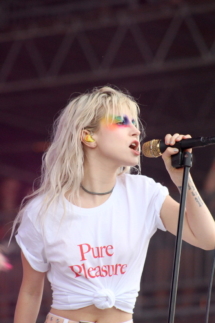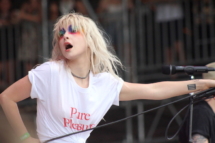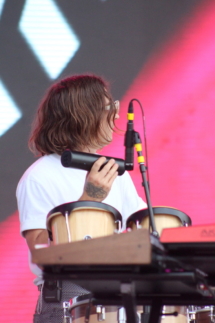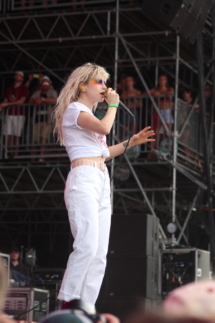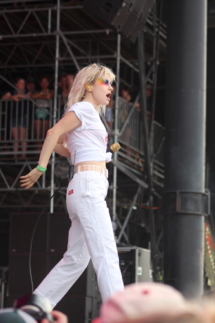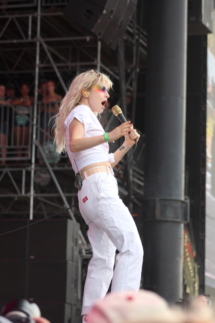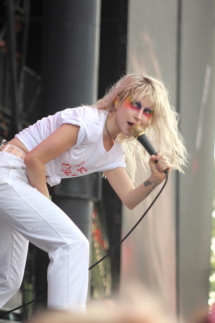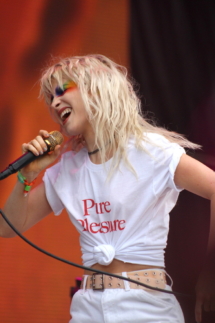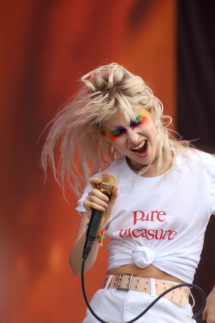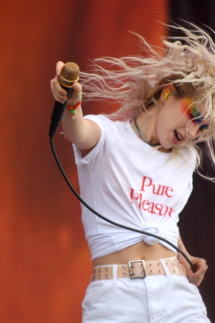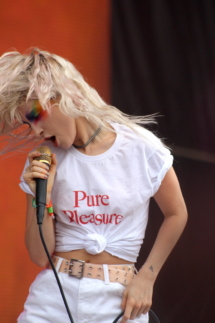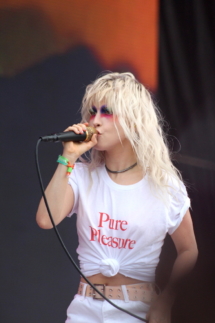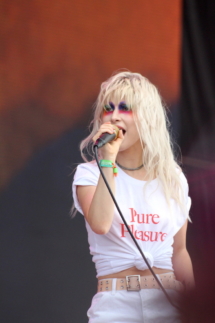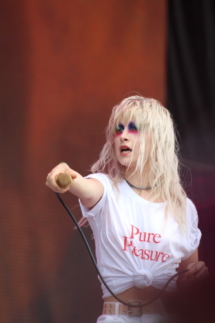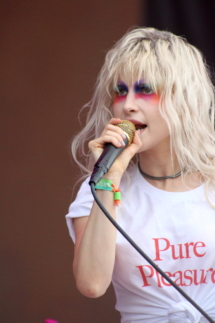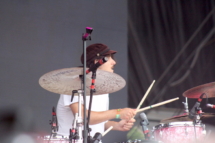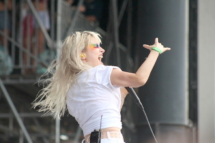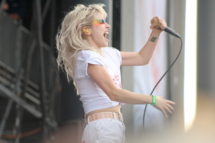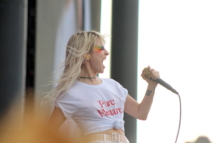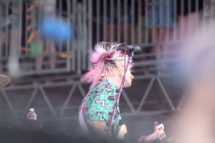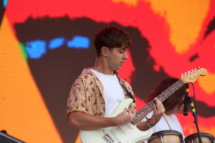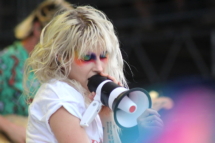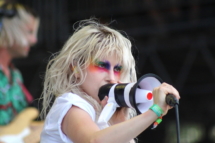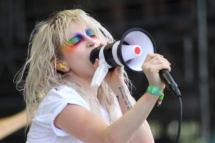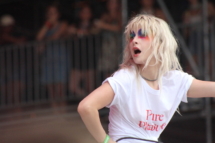
by ImperfectFifth | Aug 19, 2020 | singles, wolf tracks
L.A.-based trio LANY has released its soothing new single and music video, “you!.” The band first revealed themselves to the world with their self-titled debut in 2017 and secured their reputation with their 2018 album Malibu Nights which cracked the Billboard Album Chart. They have millions of followers and billions of streams from across the globe, which they follow up with by playing sold-out shows from L.A.’s Greek Theatre to London’s Brixton Academy. Now, they’re back with their upcoming album mama’s boy, set to release on October 2nd. “You!” is the third single to be released from mama’s boy, following “if this is the last time” and “good guys.” After finishing their Malibu Nights world tour, Oklahoma-born songwriter, lyricist, and producer for the band Paul Klein made his way to the country outside Nashville and began to outline mama’s boy. Working with several accomplished songwriters, Paul began to reconcile the differences between his newly found L.A. persona and his Great Plains heritage. “Someone asked me where I was from and somewhere, out of my spirit, I just said ‘Man, I’m from Oklahoma!’ It was a weird sense of pride, to be from the middle of nowhere,” he says, pointing to the inspiration behind the album. In the video for “you!”, we see this deeply rooted pride in Paul’s homeland come to life with nostalgic musical scene painting that ties in perfectly with the barren landscape.
Over the course of the video, the sun peeks over the horizon at varying degrees, sometimes shrouding the trio and revealing them only as silhouettes, sometimes shedding light onto them and their strikingly sincere demeanor. The music is straightforward and genuine, with a concise use of calm instruments and atmospheric harmonies that achieve the nostalgic sound without excess, matching perfectly with the secluded environment that is empty save for the band and their equipment. Each verse feels somewhat removed, consisting mostly of vocals and slightly muffled drums with comments from the guitar now and then. The chorus brings everything into focus, with each instrument part adopting a clean sound that resonates with the listener. The video, shot in the middle of nowhere, evokes a sense of eased isolation– and although it’s a nod to Paul’s memories of Oklahoma, it also reminds us that isolation isn’t necessarily a bad thing. In the context of the pandemic the idea of being removed from society is not ideal, but when you watch “you!”, you really feel the sanctity and peace that can come from taking a step back.
It’s always important to take a moment and let yourself breathe. Let “you!” and the perspective it brings be that moment for you. Listen here.

by Phlis | Nov 23, 2018 | 5 to 7
Run Tiny Human is your 8th album with Jeff Stuart Saltzman, what makes the musical relationship between you and Jeff last so long?
Rachel: When you work with someone for that long–especially on something so personal as your own music–you’ve both seen one another at your very best and very worst. It’s intense, recording an album. And we’re both kind of intense, very opinionated people, on top of that.
I learned to trust Jeff. We became very good friends at some point, but even early on, he won my trust because he was clearly not one to b.s. or throw compliments around. I could tell I’d get the truth out of him–he’s brutally honest, though not in a mean way. He can’t help it. I tend to like people like that. Critical, but not cruel. And unstinting with honest praise. And he wanted to help me to get to what I want–not what he wanted, though his contribution to my records is vast and invaluable.
We’ve been working together long enough that we have a kind of shorthand, now. We know each other, and he really knows my music and the way I work–the way my mind works and the way I actually like to work while recording. I become aware, working on Run Tiny Human, that Jeff’s been very observant and made a lot of changes over the years in working with me, on the process, based on his observations–trying to go with my flow and make it easier for me. It’s not always easy with two such strong-willed people in a room, but I rely on him to give it to me straight, and he has never failed.
Many artists have contributed on Run Tiny Human from some amazing bands, who were they and what was it about their style that fit so well with your sound?
Rachel: Ben Landsverk (Wonderly, Hawks & Doves, OK Chorale) is a dear friend and has been playing with me for many years, now. When we met we were singing a concert of Bach and Charpentier for Trinity Consort, which is weird to think about, now! We discovered one another’s other musical lives and we started playing together in a few bands. Ben’s my righthand man–he does everything. He’s a super quick, versatile singer with a freakish range (it’s just him and me, multi-tracked and asthmatic, singing that backup on Wedding Song/Bag of Bones), he can play anything–viola, bass, guitars, keys, percussion–and he’s just beautifully musical. He makes everything seem so easy, but it’s not.
Jeff Langston (Antony and the Johnsons, Mo Phillips) is in my band and has also become a treasured friend. He grew up in Oregon and moved back from NYC with his wife and son a few years ago. We met backing up a mutual friend for a radio show. Jeff’s an incredibly sensitive player–he pays attention more closely than almost anyone I know to what’s happening musically, and he always tries to serve that. He’s been a real stalwart for me–a total pro and supportive in myriad ways.
Leigh Marble (Leigh Marble) has also been in my band for years now and is a well-regarded songwriter/performer and also a great friend of mine. I like the way Leigh thinks, and I like the way he plays guitar. He can get a very raw sound and he’s never noodly–doesn’t overplay. He makes interesting choices and he’s way more fun to watch play than I am!
Justin Harris is a good friend of Jeff’s and a friend of mine, too. He happened to be in town between tours with Bloc Party and kindly came over and played bari sax and bass on Gitcher. He and Danny Seim (Menomena) played on a coupla songs on my album World So Sweet. What I had him doing on Gitcher was incredibly repetitive but Justin’s got a loose, kind of loopy way of playing that I really like, and it gives life to the repeated bits.
Joe Mengis (Eels) and Mark Powers (Robert Wynia) were both suggestions of Jeff’s–he’d worked with both of them right before we started recording. Both are pros and lovely people. Mark is a fiend at anything you set before him–no limits. And Joe took a very weird, counterintuitive request from me and hit it out of the park.
Katie Taylor (Opera Theater Oregon) is my sister, who also does the graphics for my albums, and who is my guinea pig whenever I’m writing songs. I can sing a harmony or melody or whatever to her and she can immediately sing it back. Katie’s one of the most talented people I’ve ever known, and we’ve sung together forever. She sings in the choir on “Heir Apparent” and “Yourself/You Reprise.” That’s her doing the high “C” on Heir (if you can hear it!).
Lisa Stringfield-Prescott (Ages and Ages) is a prized friend who was in the bands Carmina Piranha and Carmina Luna. She’s sung on several of my albums and I love the quality of her voice, and her stage presence. Lisa’s also been a huge support over the years–I don’t know what I’d do without her.
Jim Brunberg (Box Set, Wonderly, Roam Schooled) is a friend and I asked him and his daughters, Dana and Vern, to come sing on a track. Jim’s a truly great musician and one of those people who can sing anything in any range, so I grabbed him. Jim’s also been a good friend to me and my music.
Phil and Gayle Neuman (De Organographia) have played on, I think, four of my albums, now? They’re specialist on Renaissance and Baroque (and some ancient) instruments. They are famous in those circles–hence their playing on the Ben Hur remake soundtrack. 🙂 They’re good friends of mine and can play any instrument, and their collection of instruments–most of them made by Gayle and Phil–is awe-inspiring!
Jeff Stuart Saltzman (Cerebral Corps, Sunset Valley) I talked about already….but not many know he’s a great musician and songwriter. I exploit Jeff’s musical talents for all I’m worth when we’re recording–he’s very handy. That’s him muttering on “Gitcher,” at my request.
How did you interpret what your mind was thinking about the world in to a lyrical and musical form?
Rachel: I don’t know! I don’t really think about it so clearly when it’s happening. Ideas just knock around and then they come out. I’ll get up and go record them, I’ll get up and go to the piano, I’ll write down a lyric. It all kind of comes together when you look at it as a whole, later. Then, I see the pattern and where my brain was dwelling.
I personally love the idea behind Little Gyre, can you tell us more about that specific song?
Rachel: I was lying in bed, half awake, and I don’t know what prompted the thought but I started thinking about the junk in space peering down at the ocean garbage (the Pacific Garbage Gyre). Garbage high, garbage low! I have no idea why I thought I might want to write a song about that. I got down (on digital recorder) what I was thinking and I went to sleep. When I worked on it later in my typical misty fashion, the space garbage began to morph into a kind of stalkerish entity, obsessing over the ocean garbage. In the end, it breaks orbit to fall into the sea. I feel bad for the ocean garbage (forgive me, ocean garbage)…
I think this came from my almost constant stewing over climate change and our fucked over world. I am chock full of Apocalypse.
When do you feel was the era when Americans had sense and at what point do you feel it started to get crazy?
Rachel: I keep coming back to the FDR era (for sense), and that’s a sad thought because it was so long ago. But one of the things I most admire about that era is the community-mindedness, as opposed to the lunatic focus on the individual in the America of now. Americans are so belligerently self-serving now, nothing gets done. It’s literally impossible for so many hellbent “individuals” to pull together. We all want what we want when we want it, and we all deserve it, and damn you to hell if you get in the way of what I want, cuz I got muh rights!
I think the ’60s and ’70s took a kind of latent, inbred American crazy and tipped it into overdrive, what with the whole “reality is subjective” thing, the questioning of fact and truth, etc., coloring it all relative, nothing tethered to anything real anymore, just free-floating bullshit. An early triumph for the wretched Cult of the Individual.
Kurt Andersen wrote a wonderful, horrifying book called Fantasyland; How America Went Haywire: A 500 Year History. He posits that we started out crazy–that the people who settled America set the groundwork for the crazy. And I think he’s right–I think Americans from the get-go regarded themselves as exceptional and that that, unfortunately, has stuck and transmogrified into something truly sick–what we have now. I like how a reviewer of Andersen’s book put it (Hanna Rosin): “Fake news. Post-truth. Alternative facts…. The country’s initial devotion to religious and intellectual freedom, Andersen argues, has over the centuries morphed into a fierce entitlement to custom-made reality. So your right to believe in angels and your neighbour’s right to believe in U.F.O.s and Rachel Dolezal’s right to believe she is black lead naturally to our president’s right to insist that his crowds were bigger.”
The Reagan years were another milestone of crazy, of a different sort. The onset of the GOP’s ever-so-patient-and-deliberate, decades-long Grand Plan of Selfishness–deregulation, the handing over of America to corporate interests, circling the wagons, the insistence on America First!… all wrapped up in shameful jingoistic posturing, one hand waving a flag and the other taking your wallet. USA! We had gone from the heartening scenario of the gas crisis in the Carter years, which is, I think, the last true example of Americans actually acting with a sense of pulling together. They did real things, made real (if not great) sacrifices–drove less, got smaller, more gas-efficient cars, etc. It almost seems mythical to me when I think about it now, because everything around us (climate change, for one) dictates bigger sacrifices and changes than we successfully effected back then; only today’s Americans do exactly the opposite of what is required–buying bigger bigger BIGGER vehicles, traveling/flying more, ordering more shit from Amazon, building bigger homes, getting bigger appliances, sucking up more resources and eating everything in sight. That those Keurig machines could even exist in this day and age boggles the mind. Americans, of course, love them.
What is your own favourite part of American history and what makes it special to you?
Rachel: Well, this is cheating on the question a little, but I’d sure like to see pre-Columbian America, mainly so I could see what nature–flora and fauna and sea–was like, pre-trampling and despoiling. I know big civilizations already existed with the tribes, and land clearing was happening even then. But–as far as I know–First Peoples weren’t hunting things to extinction or extracting/cutting/plundering nearly so well as later peoples did. I’d love to see my own region (Pacific NW/US) when the forests were full of gigantic trees, and that dense forest floor. I’d like to see the land and all the creatures, the ocean and all its creatures, breathe the air. I’d really like to see it all pre-people, actually. The answer, therefore, to “what would make it special to me” is: no people at all. 😉
I’ve heard you are a fan of BBC costume dramas, which is your favourite one and why? Also if you could star in one of them then which character do you think suits you as a person?
Rachel: OOOHhhhh! So many! So many! I do love a good costume drama! And the BBC really does do them best. 🙂 Gah, how to choose? Faves include: Jane Eyre (1983–I’m a purist–but I do like the 2006 version–Ruth Wilson is the only actress I’ve seen who approaches the greatness of Zelah Clarke’s Eyre); The Forsyte Saga; The House of Eliot; Our Mutual Friend; Middlemarch. But I’d have to pick either Persuasion (1995) or Pride and Prejudice (1995–wow! That was a good year!) for my absolute favorites. I have watched those too many times to count. If I could star in one, which character suits me?… hmmm. I’d like to think I’m Lizzy Bennet, but I’m probably more Mr. Rochester. 😉 NOTE TO THE BBC: Please make Villette!
For the majority of your life you have lived in Portland, what is it about Portland that keeps you there?
Rachel: Ugh. Nothing, anymore. I and mine and my sister moved out a year ago because we couldn’t take living there anymore. It’s changed so drastically over the past 10-20 years, it’s unrecognizable…so depressing. I went through a long period of frantically dragging my poor husband all over town to try to escape the awfulness (constant construction/overdevelopment/razing, decades of it now; increased crime; tagging, garbage, lines and cars everywhere; displacement; pollution; soaring prices; noise; and some really up-their-own-asses new residents hashtag NOT ALL NEW RESIDENTS) and find peace. Alas, it was not to be had, so we finally got out. I only wish we’d done it sooner. I feel like I was in mourning for my city for the past decade plus. I felt like a stranger there in my hometown, my lifelong home. By the time we left, I didn’t care anymore what happened to it. Just exhausted and sad. It has been “loved” to death death death.
Can you please tell us of your aunt Mette who formed inspiration for one of your songs on your album Half Hours With The Lower Creatures?
Rachel: I don’t remember much about her because I was so little when she was still alive. I never met her in person. But she corresponded with me from Madagascar, where she was a missionary. I remember writing to her and I remember her spidery handwriting–she was very very old when she was writing to me. She was from Norway. I would give anything to be able to talk to her now.
Can you remember the first demo tape you ever did? How did it feel to hear your music recorded for the first time?
Rachel: My brothers and sister and I recorded ourselves doing stupid shite, growing up, so I was pretty familiar with the sound of my own voice. My husband bought me a Tascam Porta 05 when I was in my twenties, not long after we married, and that was a turning point–he made me start to take my songwriting more seriously. It was so wonderful to be able to record multiple tracks, because I’d been using two tape machines to do that! Going back and forth until things got faster and faster and higher and higher, hah! Anyway–it was a great spur to creativity and made my brain just GO. I really loved it.
I think I just felt….satisfied, when I first heard my music recorded. And also twitchy and dissatisfied, because there are always things you wish you’d done differently. But I generally self examine as I go along with a ruthless rigor that prevents (most) later regret. If I don’t like something, I can always tell, and I’m not shy about changing it. I follow my gut and my ear. That’s a weird visual…
___
Keep up with Rachel Taylor Brown here.
by: Phill Bruce

